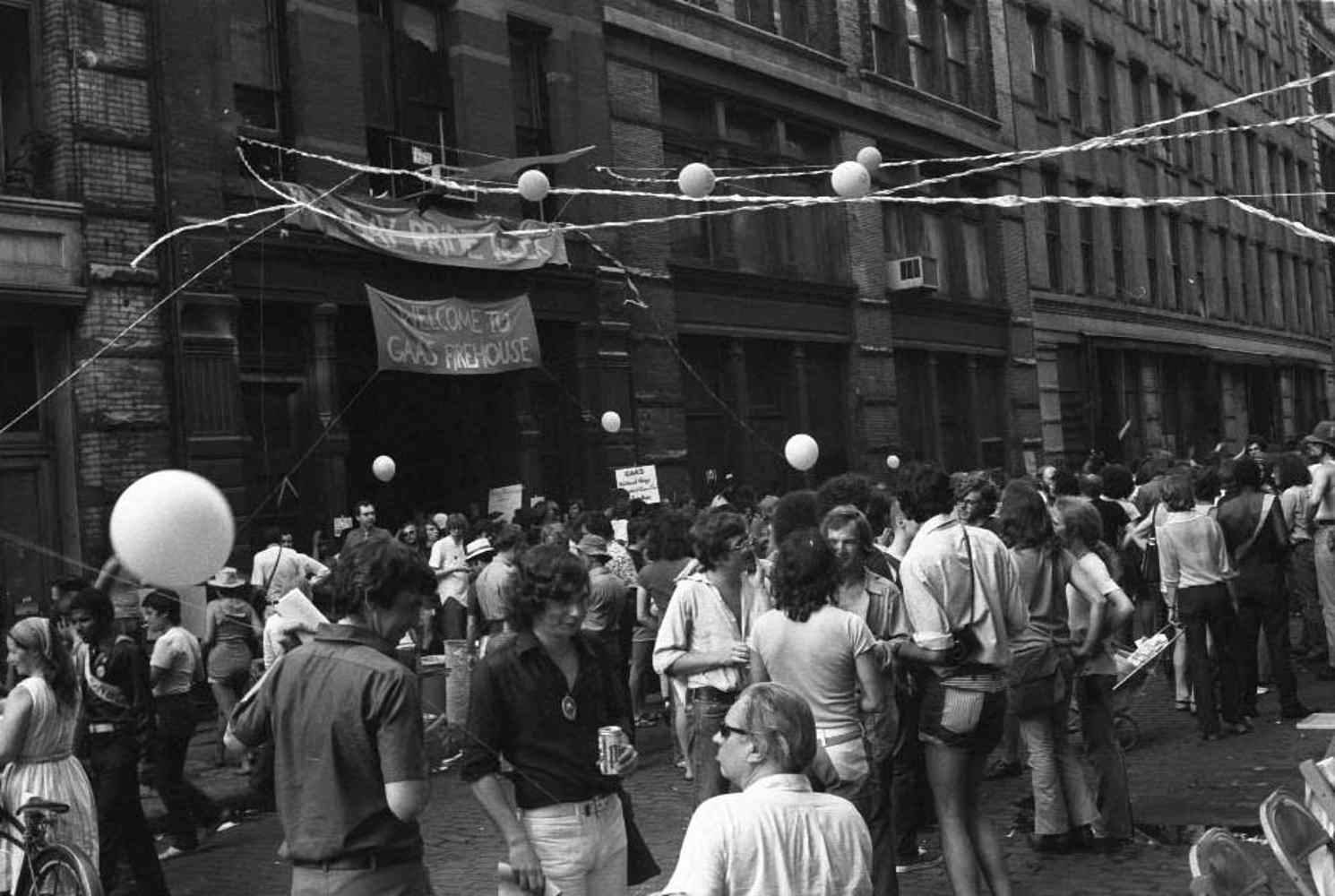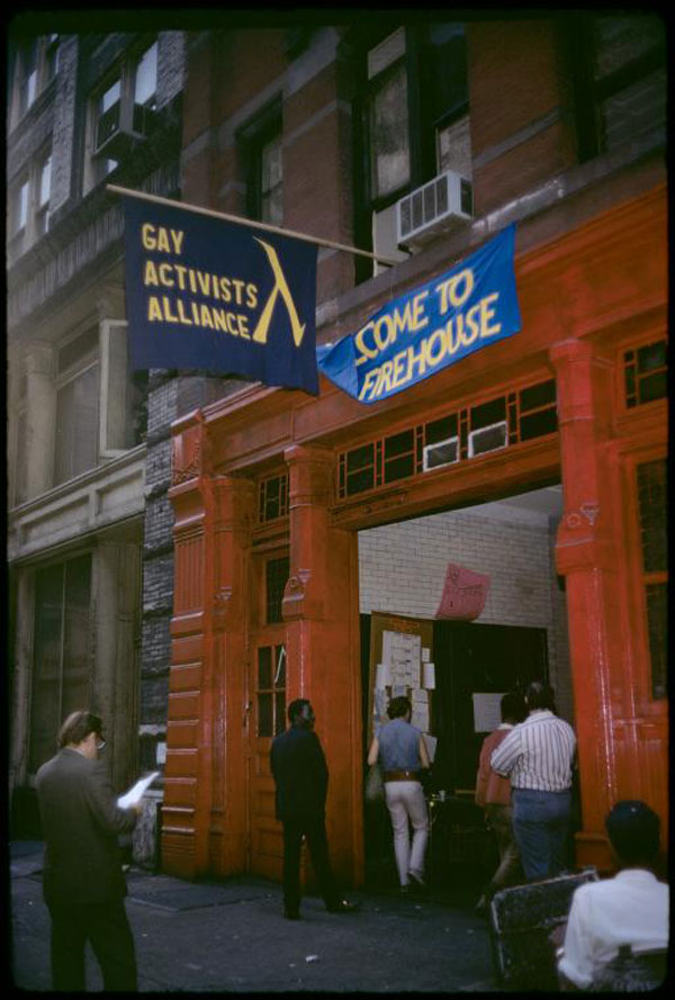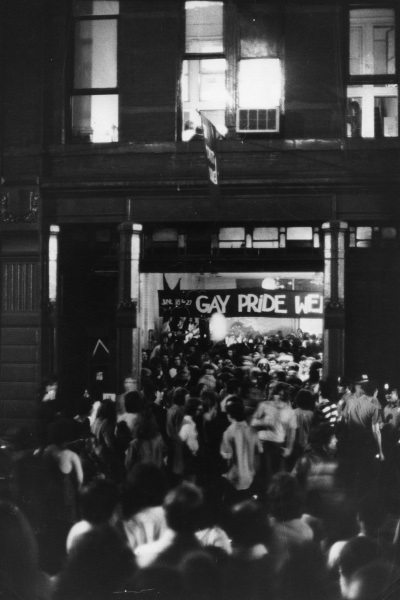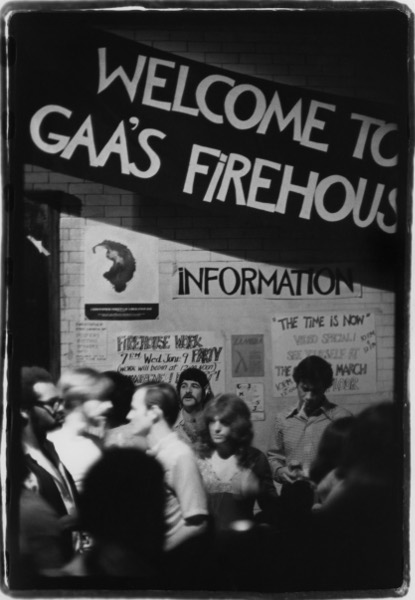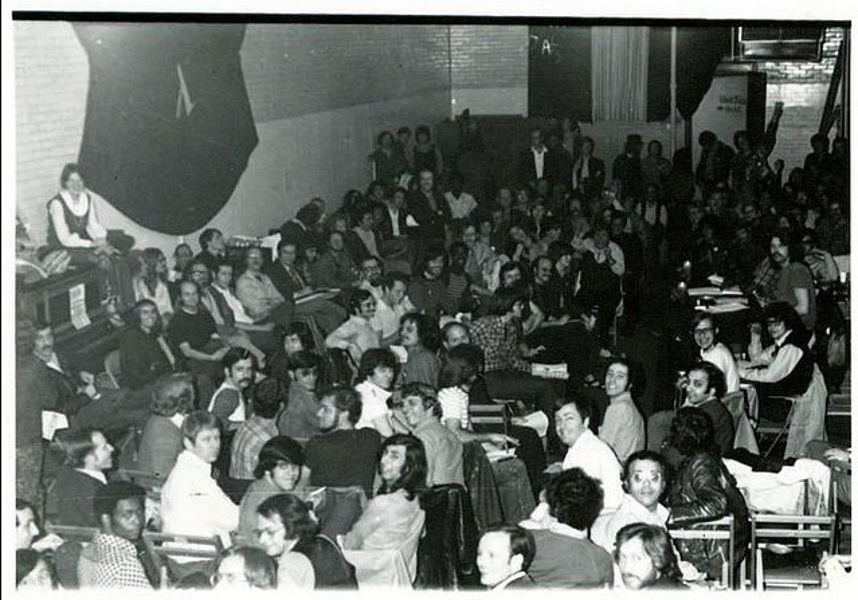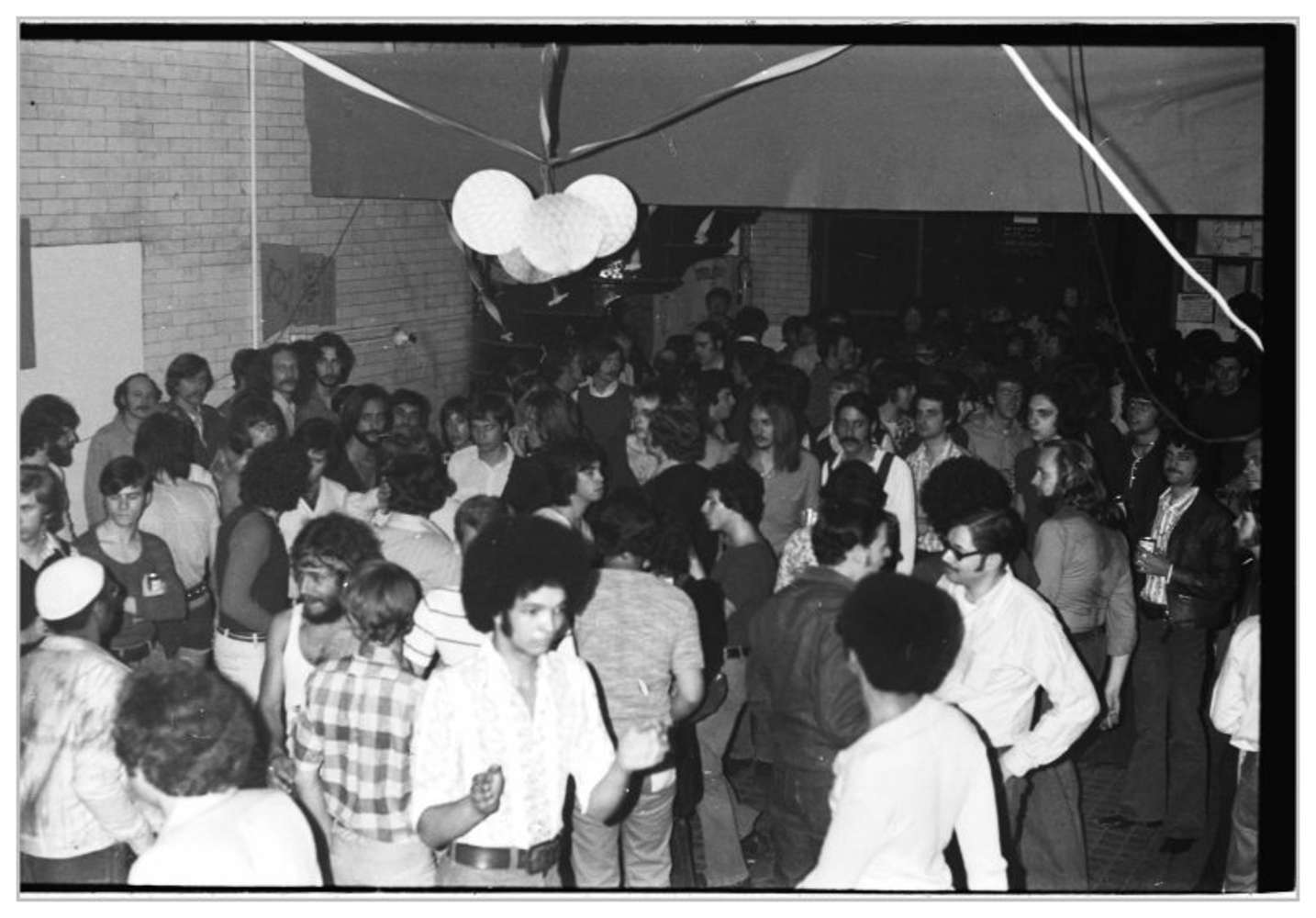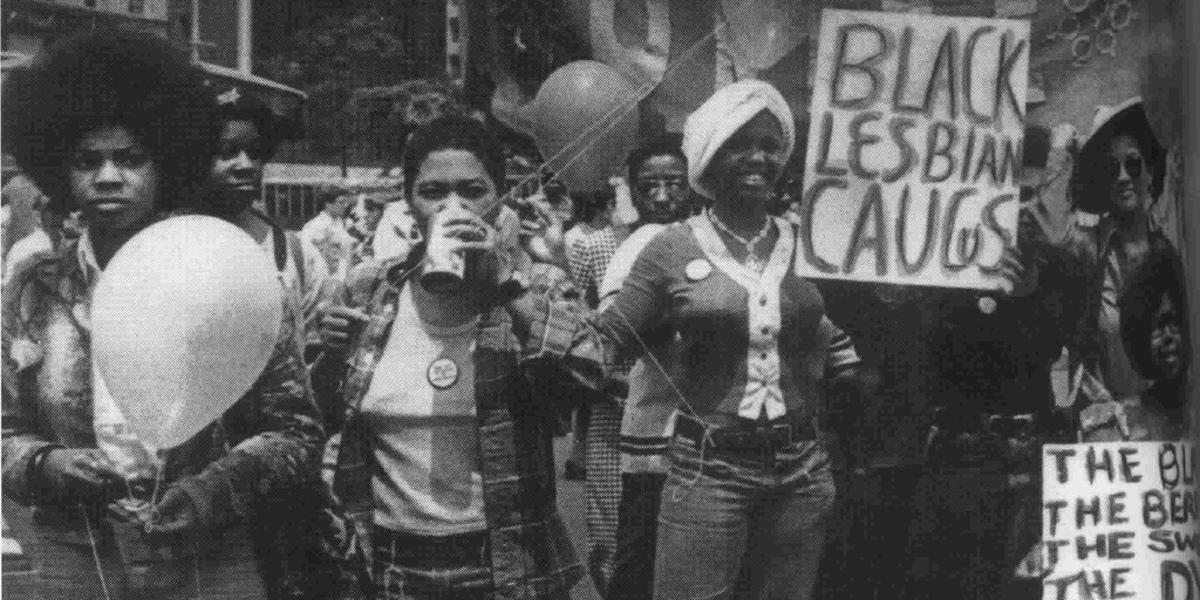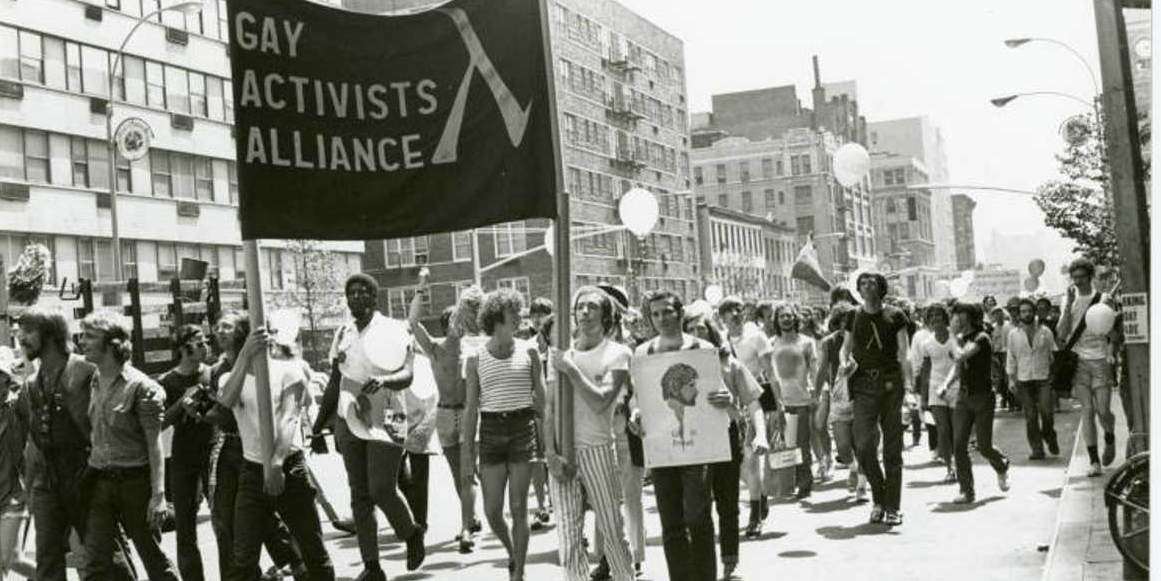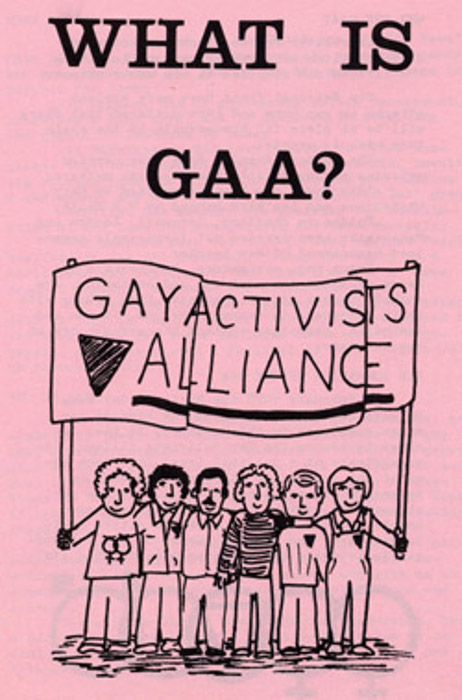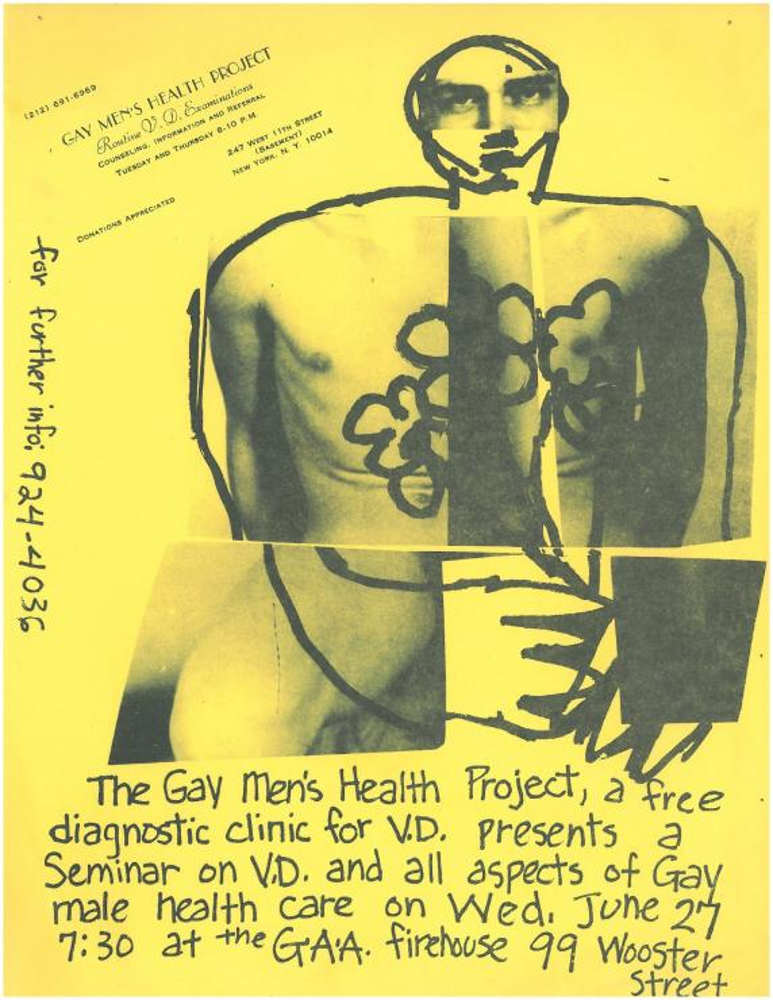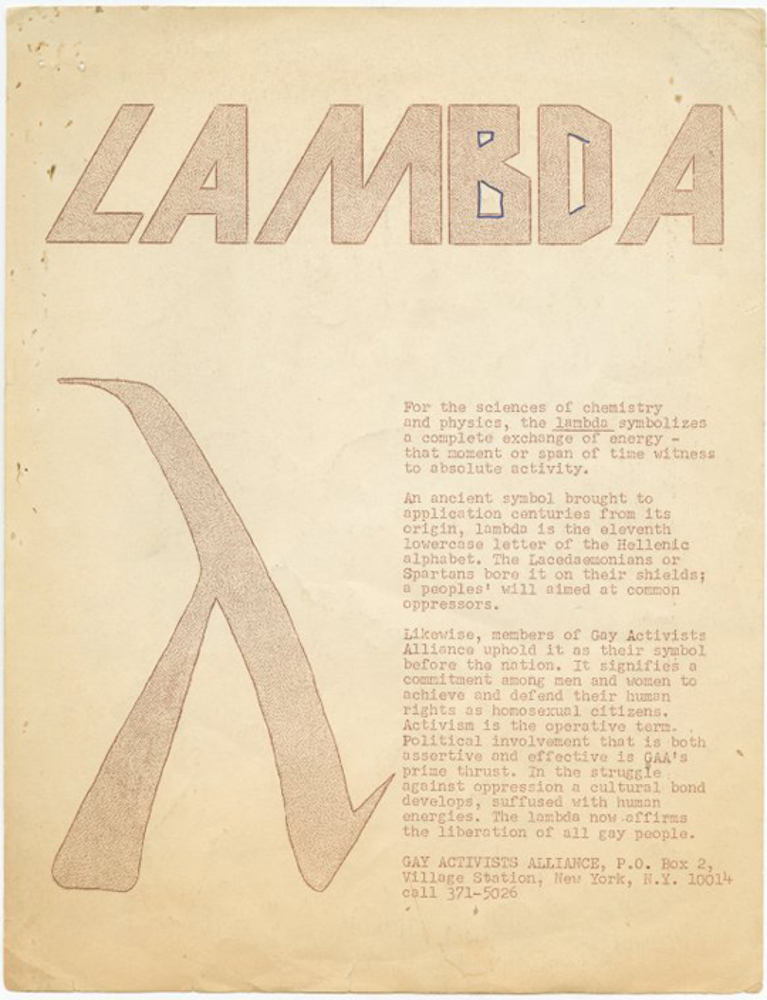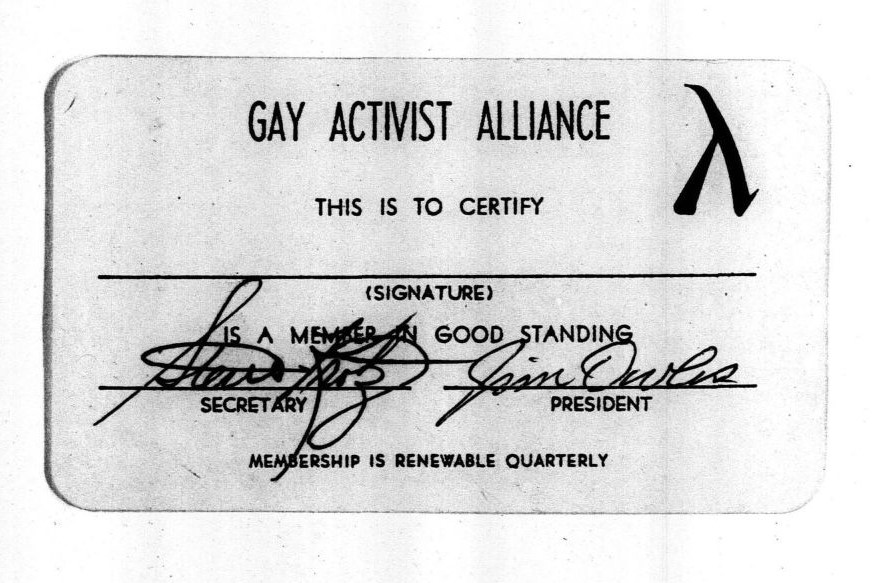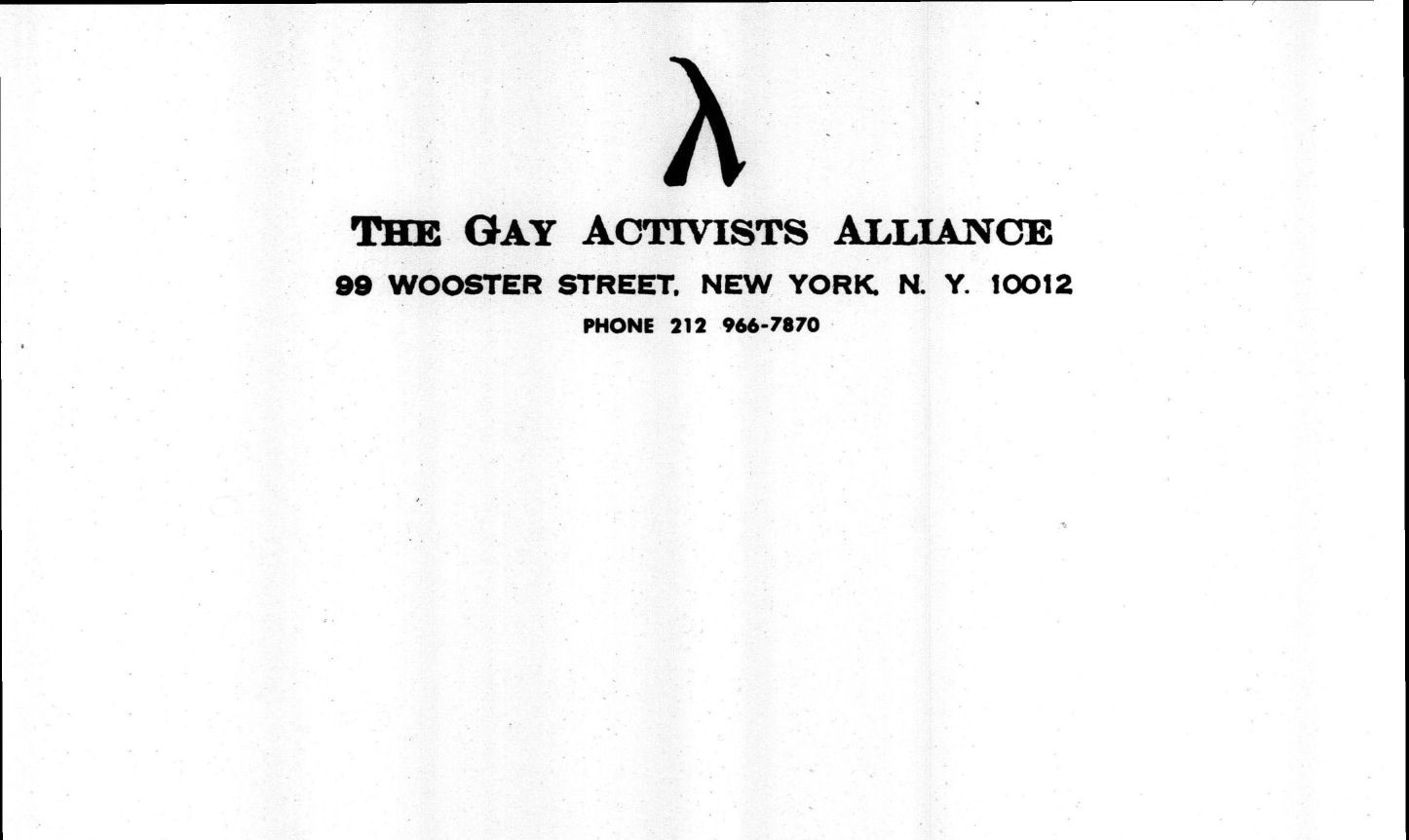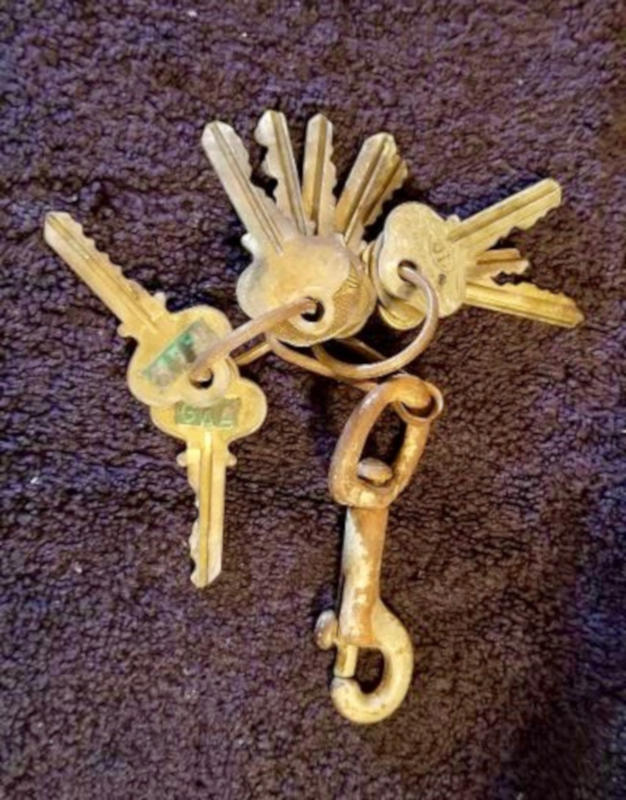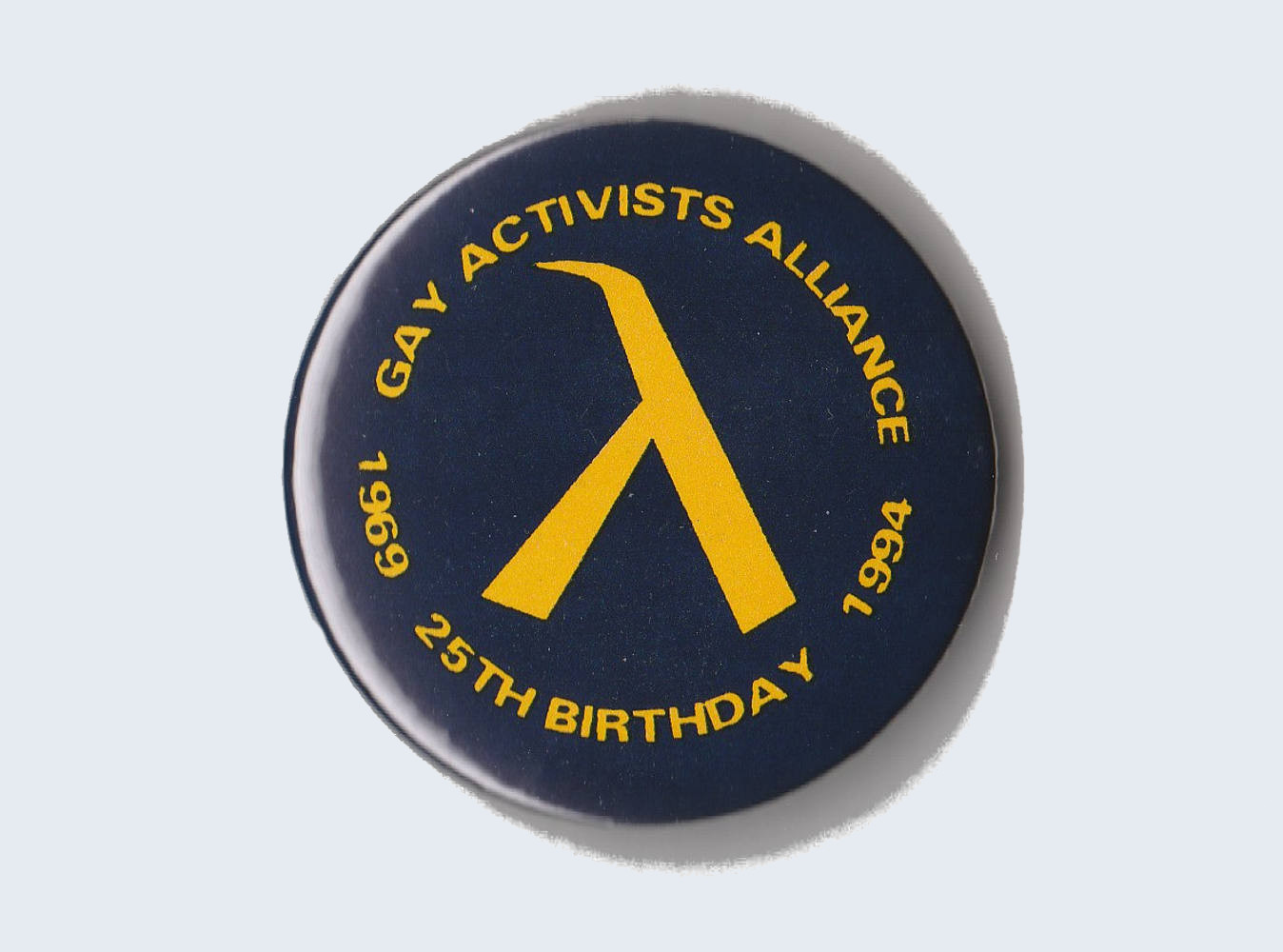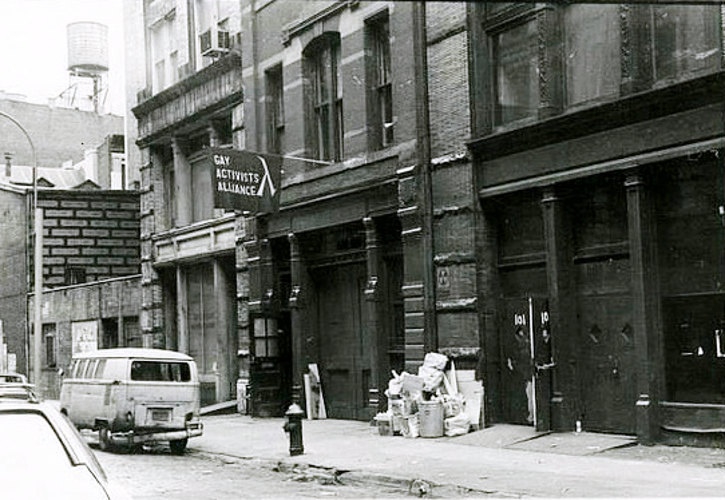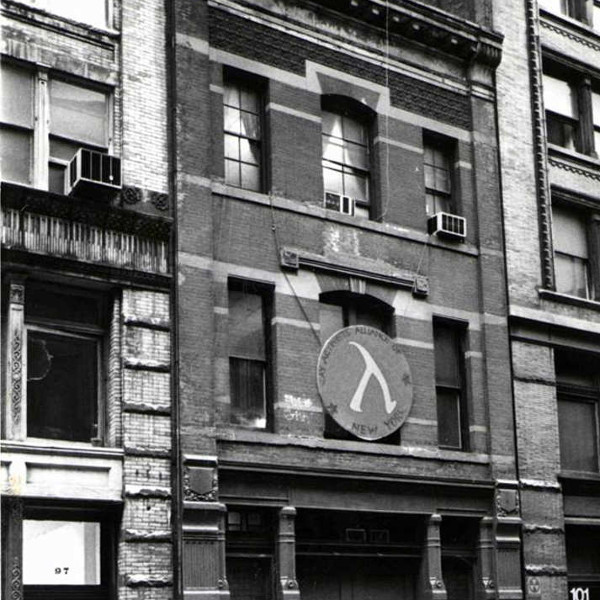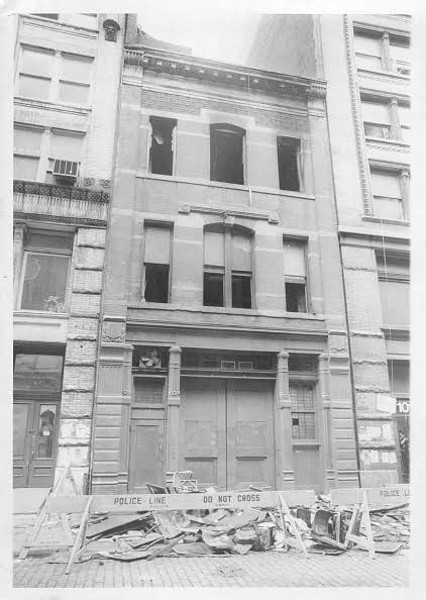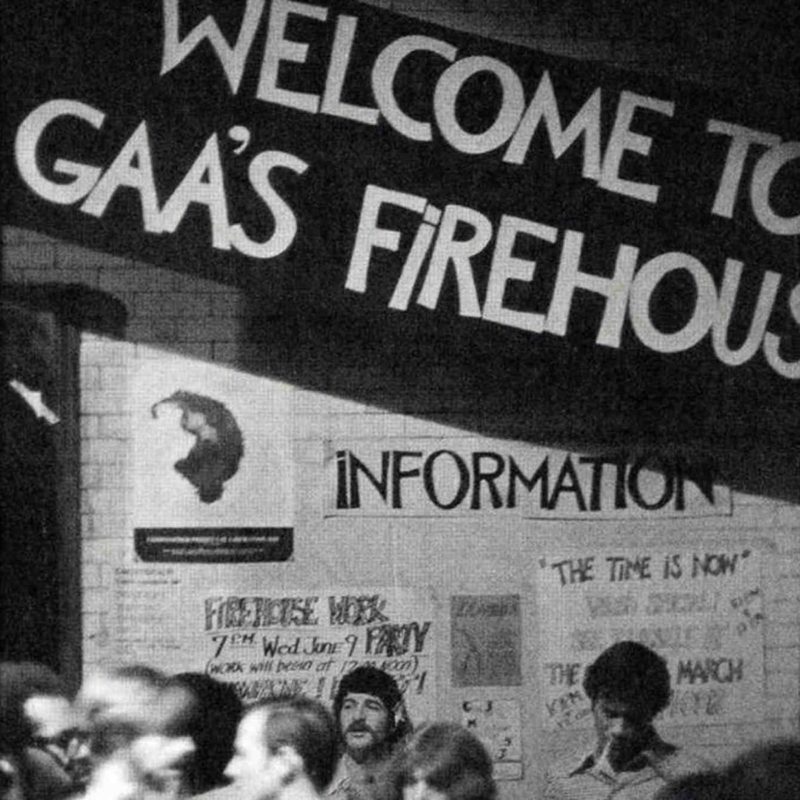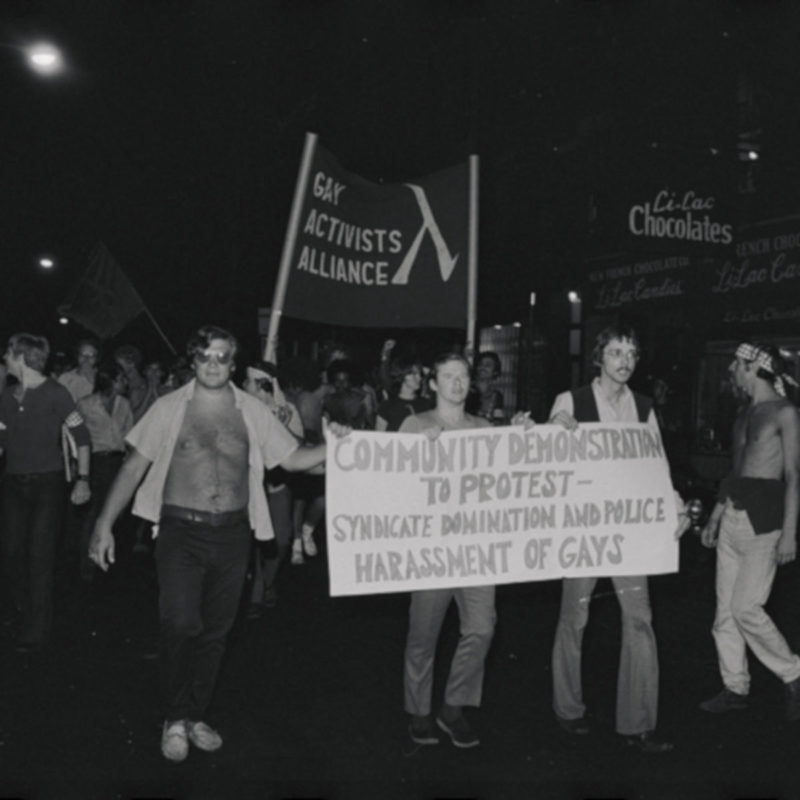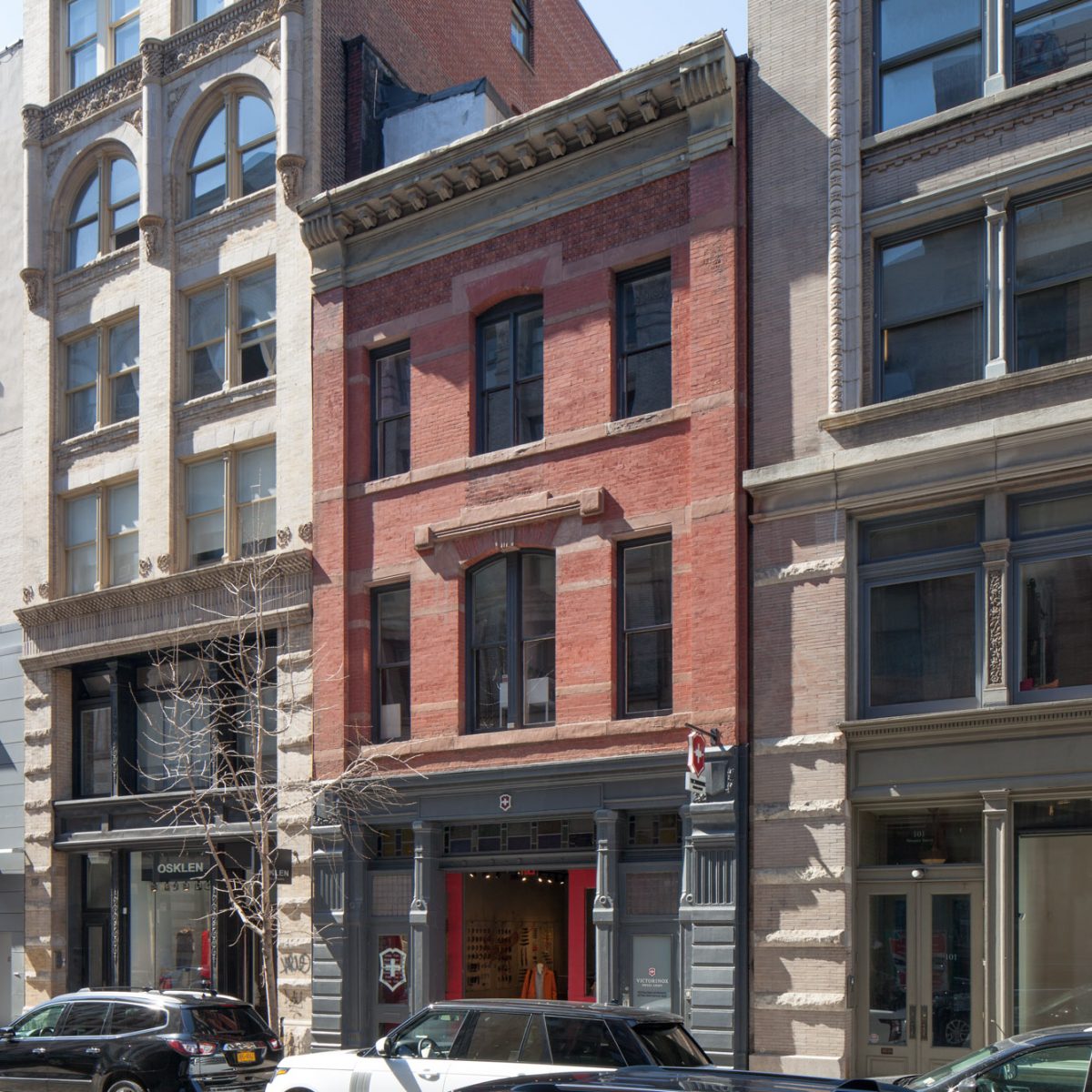
Gay Activists Alliance Firehouse
also known as the GAA Firehouse or The Firehouse
overview
The Gay Activists Alliance (GAA) formed in December 1969 and became the most influential American gay liberation political activist organization in the early 1970s.
From 1971 to 1974, GAA used this firehouse in SoHo as its headquarters, which served as New York’s most important LGBT political and cultural community center during these years.
The NYC LGBT Historic Sites Project’s advocacy led to the site’s designation as a New York City Landmark by the NYC Landmarks Preservation Commission in 2019.
History
This former firehouse in SoHo served as the headquarters of the Gay Activists Alliance (GAA) from 1971 to 1974. GAA was formed in December 1969 when a number of members, led by Jim Owles, Marty Robinson, and Arthur Evans, broke away from the more radical Gay Liberation Front.
The exclusive purpose of GAA, the leading and largest American gay liberation political activist organization of the early 1970s, was to advance LGBT civil and social rights. It lobbied for the passage of local civil rights laws, banning police entrapment and harassment, the creation of fair employment and housing legislation, and the repeal of sodomy and solicitation laws. Many of the group’s activities were planned at the Firehouse after it opened in May 1971, including sit-ins and picket lines. Perhaps GAA’s most famous tactic was the “zap,” a direct, public confrontation with a political figure regarding LGBT rights, designed to gain media attention (see a list of GAA actions, in chronological order, in our curated theme). GAA was the first group to adopt the lambda as a gay symbol in 1970.
The Firehouse was New York’s most important LGBT political and cultural community center during these years. It hosted numerous social events, particularly weekly Saturday night dances (crowds were said to be as large as 1,500 people), which provided income for the group’s activities, and “Firehouse Flicks,” a Friday night movie series selected by activist and film buff Vito Russo. The building was also used for meetings and events by Lesbian Feminist Liberation, Gay Youth, the Gay Men’s Health Project, and the Catholic group Dignity. The Black Lesbian Caucus, one of GAA’s subcommittees, later became the Salsa Soul Sisters. The Firehouse was also the site of Jonathan Ned Katz’s seminal play Coming Out: A Documentary Play About Gay Life & Liberation in the U.S.A. in June 1972.
In Arnie Kantrowitz‘s book Under the Rainbow: Growing Up Gay (1977), he described the spatial usage of the building: the basement had space for committee meetings; general membership meetings and dances were held on the first floor; the second floor had a snack bar and committee meetings space; and the third floor had offices and additional committee meetings space.
An October 1974 arson fire destroyed the interior of the firehouse and GAA was evicted. Of the fire, GAA president Morty Manford stated that it was “part of a wave of harassment against gays.” GAA later moved its headquarters to 229 East 11th Street, meeting there from June 1975 to August 1976. It then moved to the West Side Discussion Group Center. GAA disbanded in 1981.
Landmark Designations for LGBT Significance
In June 2019, based on recommendations by the NYC LGBT Historic Sites Project, the NYC Landmarks Preservation Commission (LPC) designated the Gay Activists Alliance Firehouse a New York City Landmark. The LPC’s designation report and the Project’s testimony are available in the “Read More” section below.
Entry by Jay Shockley, project director (March 2017; last revised June 2019).
NOTE: Names above in bold indicate LGBT people.
Building Information
- Architect or Builder: Napoleon LeBrun
- Year Built: 1881
Sources
Arnie Kantrowitz, Under the Rainbow: Growing Up Gay (New York: Pocket Books, 1977).
Christopher D. Brazee, Gale Harris, and Jay Shockley, “150 Years of LGBT History,” New York City Landmarks Preservation Commission (June 2014).
Daniel Hurewitz, Stepping Out: Nine Walks Through New York City’s Gay and Lesbian Past (New York: Henry Holt & Co., 1997).
“GAA Finds a Home,” Gay Activist, May 1971.
Laurie Johnston, “Arson Destroys Gay Activist Site,” The New York Times, October 16, 1974, 19.
Tom Hurley, “Firehouse Burns: N.Y. Gays Seek New Homes,” Gay Community News (Boston), October 26, 1974.
Do you have more information about this site?
This project is enriched by your participation! Do you have your own images of this site? Or a story to share? Would you like to suggest a different historic site?
